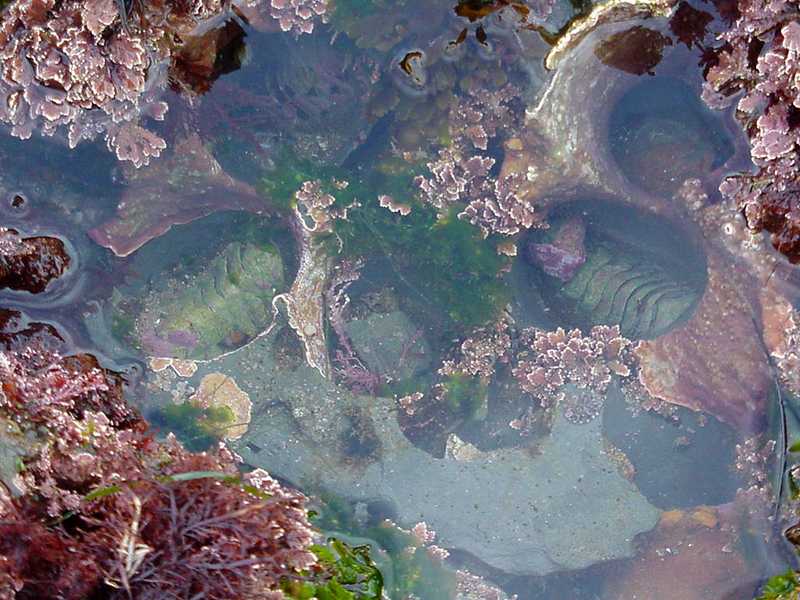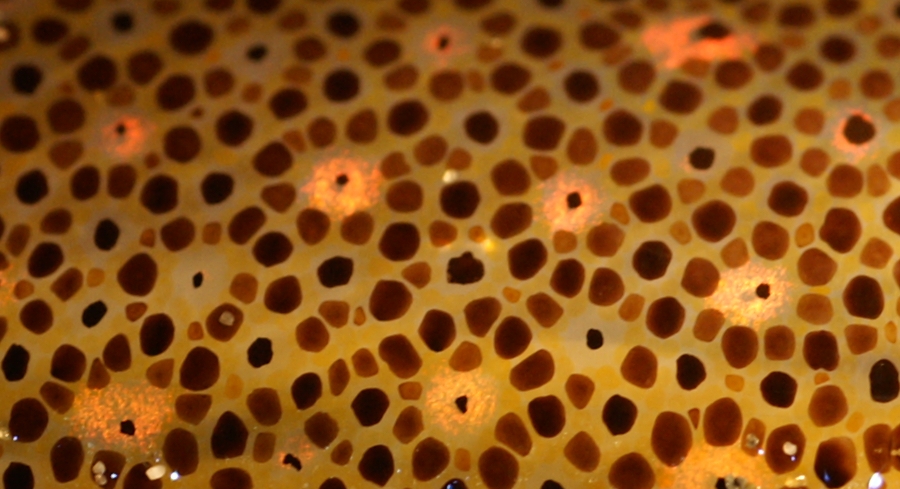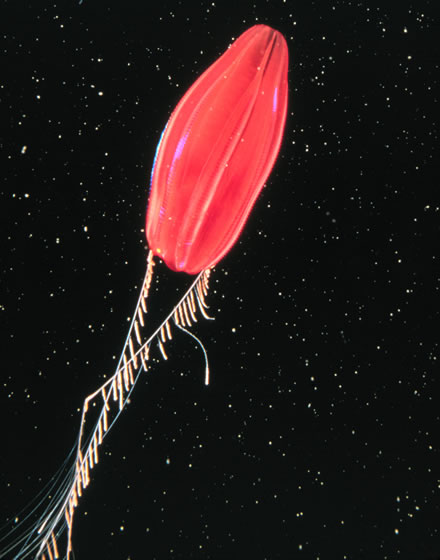|
Whip-lash Squid
The Mastigoteuthidae, also known as whip-lash squid, are a family of small deep-sea squid. Approximately 20 known species in six genera are represented, with members found in both the pelagic zone, mesopelagic and Bathypelagic zone, bathypelagic zone of most oceans. Originally described by Addison Emery Verrill, Verill in 1881, it was later lowered by Carl Chun, Chun (1920) to a subfamily (Mastigoteuthinae) of the Chiroteuthidae. However, Clyde Roper, Roper et al. (1969) raised it back to the family level, and this has not been changed since. The taxonomy of this family is extremely unstable, and there have been at times one genus, two genera and four subgenera(Salcedo-Vargas & Okutani, 1994), two genera and several 'groups' (Salcedo-Vargas, 1997), five genera and one species with an uncertain placement, or six genera. Description Mastigoteuthids range in size from quite small species in the genus ''Mastigoteuthis'', to relatively gigantic sizes in the genus ''Idioteuthis''. How ... [...More Info...] [...Related Items...] OR: [Wikipedia] [Google] [Baidu] |
Mastigoteuthis Flammea
''Mastigoteuthis flammea'' (Flaming whiplash squid) is a species of whip-lash squid. Image:Mastigoteuthis flammea2.jpg, Ventral views of funnel locking apparatuses (left: 27 mm ML, right: 35 mm ML) Image:Mastigoteuthis flammea3.jpg, Dorsal view of nuchal cartilage References * Chun, C. 1910. Die Cephalopoden. Oegopsida. ''Wissenschaftliche Ergebnisse der Deutschen Tiefsee Expedition auf dem Dampfer "Valdivia" 1898-1899'' 18(1): 1–401. External links Tree of Life web project: ''Mastigoteuthis flammea'' Mastigoteuthis Cephalopods described in 1908 Taxa named by Carl Chun {{squid-stub ... [...More Info...] [...Related Items...] OR: [Wikipedia] [Google] [Baidu] |
Carl Chun
Carl Chun or Karl Friedrich Gustav Chun (1 October 1852 – 11 April 1914) was a German marine biologist who worked as a professor at the Universities of Königsberg (1883), Breslau (1891) and Leipzig (1898). He was a pioneer of German oceanographic research, organizing the first deep-sea expedition aboard the ''SS Valdivia'' in 1898-99. He spent much of his life studying the collections made during the expedition, and was responsible for discovering many marine organisms, including the vampire squid. Life and work Chun was born in Höchst, today a part of Frankfurt, where his father Gustav (1827–1907) was rector of the Weißfrauenschule. Chun went to the Lessing Gymnasium and became interested in zoology from an early age thanks to the Senckenberg Museum in Frankfurt where he listened to lectures by Fritz Noll, Hermann Theodor Geyler, and Karl von Fritsch. He studied at the University of Göttingen and then at the University of Leipzig, receiving a doctorate in 1874. ... [...More Info...] [...Related Items...] OR: [Wikipedia] [Google] [Baidu] |
Benthos
Benthos (), also known as benthon, is the community of organisms that live on, in, or near the bottom of a sea, river, lake, or stream, also known as the benthic zone.Benthos from the Census of Antarctic Marine Life website This community lives in or near marine or freshwater sedimentary environments, from tidal pools along the , out to the continental shelf, and then down to the [...More Info...] [...Related Items...] OR: [Wikipedia] [Google] [Baidu] |
Magnoteuthis Magna
''Magnoteuthis magna'' is a species of squid in the genus '' Magnoteuthis.'' The species is widely distributed, and has been observed in the Gulf of Mexico, Indian Ocean, and off the coast of New Zealand New Zealand () is an island country in the southwestern Pacific Ocean. It consists of two main landmasses—the North Island () and the South Island ()—and List of islands of New Zealand, over 600 smaller islands. It is the List of isla .... The species is commonly found in depths below 1,000 meters. References Whip-lash squid Cephalopods described in 1913 {{squid-stub ... [...More Info...] [...Related Items...] OR: [Wikipedia] [Google] [Baidu] |
Mastigopsis Hjorti
''Mastigopsis'' is a genus of whip-lash squid containing one single species, ''Mastigopsis hjorti''. Some teuthologists consider '' Idioteuthis'' synonymous with this taxon; however, genetic results indicate that this genus is not closely related with '' Idioteuthis'' but actually closer to '' Magnoteuthis''. Description ''Mastigopsis hjorti'' is similar to '' Idioteuthis cordiformis'' in that it has large fins, skin tubercles, no pocket between the bridles and the large dividing, protective membranes on the tentacular clubs but the main difference is that this species has photophores on its eyes. The suckers on the tentacular club are all of similar size, except for those nearest the tip. The funnel has a locking-apparatus which has an oval, slightly curved depression and towards the posterior its sides protrude having no cartilaginous fleshy projections. The fins are large and measure around 90% of the length of the mantle. The mantle, head, funnel and the aboral surface of th ... [...More Info...] [...Related Items...] OR: [Wikipedia] [Google] [Baidu] |
Mastigoteuthis Inermis
''Mastigoteuthis inermis'' is a species of whip-lash squid. Richard E. Young and Michael Vecchione consider it to be a junior synonym In taxonomy, the scientific classification of living organisms, a synonym is an alternative scientific name for the accepted scientific name of a taxon. The botanical and zoological codes of nomenclature treat the concept of synonymy differently. ... of the widely distributed '' M. magna''. References *Rancurel, P. 1972. ''Mastigoteuthis inermis'' espèce nouvelle de Chiroteuthidae du Golfe de Guinée (Cephalopoda - Oegopsida). ''Bulletin de la Société Zoologique de France'' 97(1): 25-34. External links Tree of Life web project: ''Mastigoteuthis inermis'' Mastigoteuthis Cephalopods described in 1972 {{Squid-stub ... [...More Info...] [...Related Items...] OR: [Wikipedia] [Google] [Baidu] |
Chromatophore
Chromatophores are cells that produce color, of which many types are pigment-containing cells, or groups of cells, found in a wide range of animals including amphibians, fish, reptiles, crustaceans and cephalopod A cephalopod is any member of the molluscan Taxonomic rank, class Cephalopoda (Greek language, Greek plural , ; "head-feet") such as a squid, octopus, cuttlefish, or nautilus. These exclusively marine animals are characterized by bilateral symm ...s. Mammals and birds, in contrast, have a class of cells called melanocytes for animal coloration, coloration. Chromatophores are largely responsible for generating skin and eye color, eye colour in ectothermic animals and are generated in the neural crest during embryonic development. Mature chromatophores are grouped into subclasses based on their colour under white light: xanthophores (yellow), erythrophores (red), iridophores (reflective / iridescence, iridescent), leucophores (white), melanophores (black/brown), and c ... [...More Info...] [...Related Items...] OR: [Wikipedia] [Google] [Baidu] |
Bioluminescence
Bioluminescence is the emission of light during a chemiluminescence reaction by living organisms. Bioluminescence occurs in multifarious organisms ranging from marine vertebrates and invertebrates, as well as in some Fungus, fungi, microorganisms including some bioluminescent bacteria, Dinoflagellate, dinoflagellates and terrestrial arthropods such as Firefly, fireflies. In some animals, the light is bacteriogenic, produced by symbiosis, symbiotic bacteria such as those from the genus ''Vibrio''; in others, it is autogenic, produced by the animals themselves. In most cases, the principal chemical reaction in bioluminescence involves the reaction of a substrate called luciferin and an enzyme, called luciferase. Because these are generic names, luciferins and luciferases are often distinguished by the species or group, e.g. firefly luciferin or Vargulin, cypridina luciferin. In all characterized cases, the enzyme Catalysis, catalyzes the Redox, oxidation of the luciferin resultin ... [...More Info...] [...Related Items...] OR: [Wikipedia] [Google] [Baidu] |
Photophore
A photophore is a specialized anatomical structure found in a variety of organisms that emits light through the process of boluminescence. This light may be produced endogenously by the organism itself (symbiotic) or generated through a mutualistic relationship with bioluminescent bacteria (non-symbiotic), resulting in light production on a glandular organ of animals. Light organs are most commonly found in marine animals, including many species of fish and cephalopods. The organ can be simple, or as complex as the human eye, equipped with lenses, shutters, color filters, and reflectors; unlike an eye, however, it is optimized to produce light, not absorb it. In the context of developmental biology, light organs form through precise genetic regulation and, in some cases, microbial colonization during specific stages of an organism's life cycle. They play a crucial evolutionary role in enabling species to adapt to low-light or dark environments, particularly in the deep sea. ... [...More Info...] [...Related Items...] OR: [Wikipedia] [Google] [Baidu] |
Ventouse Calmar
Vacuum extraction (VE), also known as ventouse, is a method to assist delivery of a baby using a vacuum device. It is used in the second stage of labor if it has not progressed adequately. It may be an alternative to a forceps delivery and caesarean section. It cannot be used when the baby is in the breech position or for premature births. The use of VE is generally safe, but it can occasionally have negative effects on either the mother or the child. The term ''ventouse'' comes from the French word for "suction cup". Medical uses There are several indications to use a vacuum extraction to aid delivery: * Maternal exhaustion * Prolonged second stage of labor * Foetal distress in the second stage of labor, generally indicated by changes in the foetal heart-rate (usually measured on a CTG) * Maternal illness where prolonged "bearing down" or pushing efforts would be risky (e.g. cardiac conditions, blood pressure, aneurysm, glaucoma). If these conditions are known about befor ... [...More Info...] [...Related Items...] OR: [Wikipedia] [Google] [Baidu] |
Cephalopod Arm
All cephalopods possess flexible limbs extending from their heads and surrounding their beaks. These appendages, which function as muscular hydrostats, have been variously termed arms, legs or tentacles. Description In the scientific literature, a cephalopod ''arm'' is often treated as distinct from a ''tentacle'', though the terms are sometimes used interchangeably, often with the latter acting as an umbrella term for cephalopod limbs. Generally, arms have suckers along most of their length, as opposed to tentacles, which have suckers only near their ends.Young, R.E., M. Vecchione & K.M. Mangold 1999Cephalopoda Glossary Tree of Life web project. Barring a few exceptions, octopuses have eight arms and no tentacles, while squid and cuttlefish have eight arms (or two "legs" and six "arms") and two tentacles.Norman, M. 2000. ''Cephalopods: A World Guide''. ConchBooks, Hackenheim. p. 15. "There is some confusion around the terms ''arms'' versus ''tentacles''. The numerous l ... [...More Info...] [...Related Items...] OR: [Wikipedia] [Google] [Baidu] |
Tentacle
In zoology, a tentacle is a flexible, mobile, and elongated organ present in some species of animals, most of them invertebrates. In animal anatomy, tentacles usually occur in one or more pairs. Anatomically, the tentacles of animals work mainly like muscular hydrostats. Most forms of tentacles are used for grasping and feeding. Many are sensory organs, variously receptive to touch, vision, or to the smell or taste of particular foods or threats. Examples of such tentacles are the eyestalks of various kinds of snails. Some kinds of tentacles have both sensory and manipulatory functions. A tentacle is similar to a cirrus, but a cirrus is an organ that usually lacks the tentacle's strength, size, flexibility, or sensitivity. A nautilus has cirri, but a squid has tentacles. Invertebrates Molluscs Many molluscs have tentacles of one form or another. The most familiar are those of the pulmonate land snails, which usually have two sets of tentacles on the head: when ext ... [...More Info...] [...Related Items...] OR: [Wikipedia] [Google] [Baidu] |







